Celtic Wedding Traditions

The beauty and splendor of an Irish traditional Celtic wedding is a magical experience the bride and groom will remember for years to come. Whether you are of Irish descent or simply have a love for the history of Celtic traditions, there are lots of interesting and elegant ways to incorporate these ancient rituals into each part of your wedding, from the ceremony to the reception.

Handfasting Ceremonies
Did you ever think about where the phrase ‘Tying the Knot’ came from? Derived from a pagan tradition, it’s one of the oldest types of wedding ceremonies, usually overseen by a person of high standing in the community such as a druid. The bride and groom would stand face to face, holding hands, and their hands would be tied together with ribbon, kept as a keepsake, and they recite their vows. The knot represents their love growing stronger under pressure. More couples are embracing this ancient tradition into their wedding ceremonies, Even Prince William and Princess Catherine included a handfasting ceremony into their royal wedding in 2011!
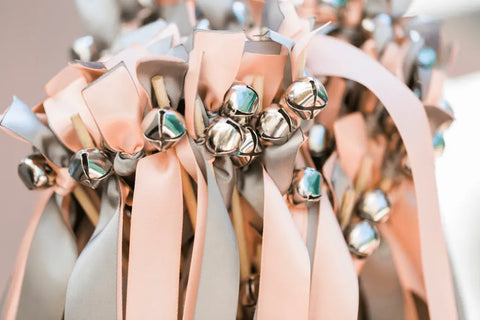
Wedding Bells
Ringing of church bells is an old Celtic tradition that was believed to ward off evil spirits and also grant wishes to the bridal couple. Presenting a newly married couple with a gift of a bell was also a tradition. If a quarrel arises, the special bell would be rung, the couple would remember the vows they made in church and the argument would break. In modern times, the wedding bell remains an endearing tradition to announce the happy couple have joined in matrimony to the world!

Horseshoes
Horseshoes have a long tradition of being associated with weddings in Ireland. It is good luck for one of the wedding party to walk down the aisle before the ceremony with a horseshoe, face side up, this would ensure the married couple would never run out of luck. The horseshoe would then be presented to the bride and groom and they would hang it up in their future house for protection and to bless their new home. You still see homes in Ireland decorated with a horseshoe over the door for this very reason.
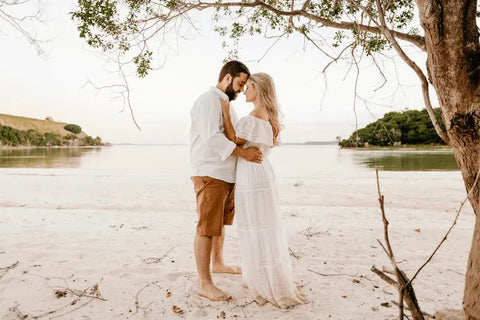
The Honeymoon
An old Irish legend from the beginning of the 6th century tells us that Alice, a beautiful daughter of a celtic chieftain was wooed by a prince with presents of honey. She used this honey to make a fermented wine called mead. She would entertain guests with this wine and often presented newlyweds with gifts of it. They would have enough wine to last them for their first month of marriage and so the term ‘honeymoon’ was derived.

Claddagh Rings
The Claddagh ring is an iconic piece of Irish traditional jewellery with a history reaching back 400 years. A Claddagh ring depicts two hands clasping a heart topped with a crown to represent love, friendship and loyalty. It is worn today to indicate if you are in a couple or single - the ring is faced in, if you are in a committed relationship and facing outwards if you are available. Typically, Grooms will wear a gold Claddagh band - the ring is faced out before the wedding and turned in after the wedding ceremony to show he has found true love!

Bride and Groom’s Wedding Outfits
Brides have a long tradition of using Irish lace and embroidering celtic knots and other traditional patterns into their gowns, especially their veil. This is a lovely way for brides to reflect on their Irish heritage - the intricate symbols add a touch of old fashioned romance to the ensemble. The Groom can also include a nod to the Celtics in their wedding attire by wearing an Irish tartan kilt. There are different tartan patterns representing each Irish county, whereby the groom can honour their hometown.

Candle of Unity and Sand Ceremonies
An ancient Irish tradition, the Candle of Unity, has the bride and groom light three candles together during the wedding ceremony. The two outer candles represent the families of the spouses and the third candle that is lit represents the new family that is formed. The Unity candle is commonly used now to symbolize the joining of the two families through marriage.
If you prefer a less traditional approach, a sand ceremony is a lovely alternative for a wedding day. This involves two small glasses of sand, representing the bride and groom, poured together into one larger glass container. The sand can be coloured blue and pink or even more symbolic is to use the sand of the beach close to the couples’ hometowns. This is especially sentimental if you are hosting a wedding away from home.
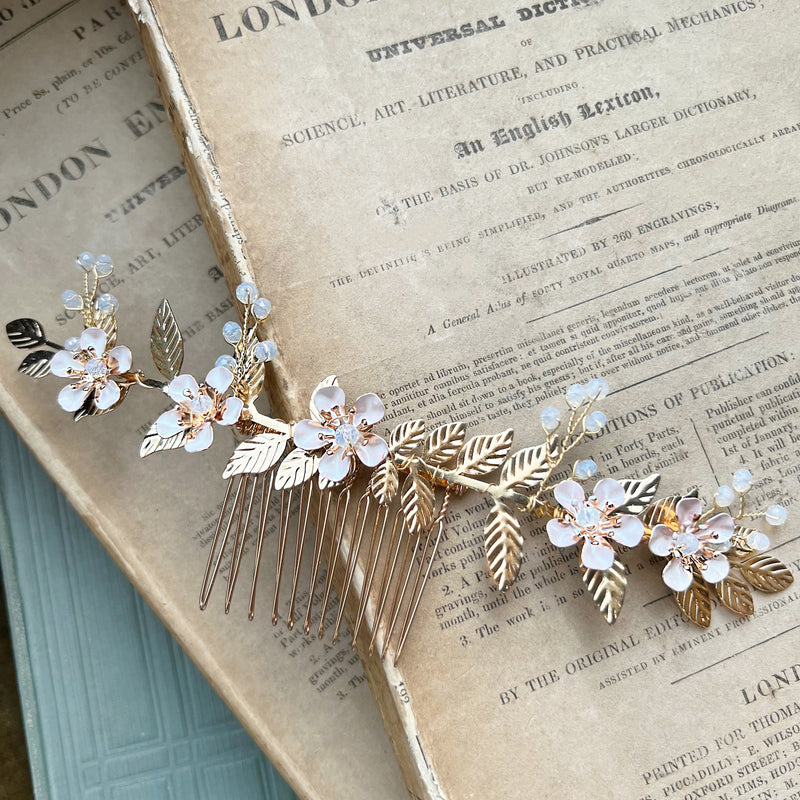 |
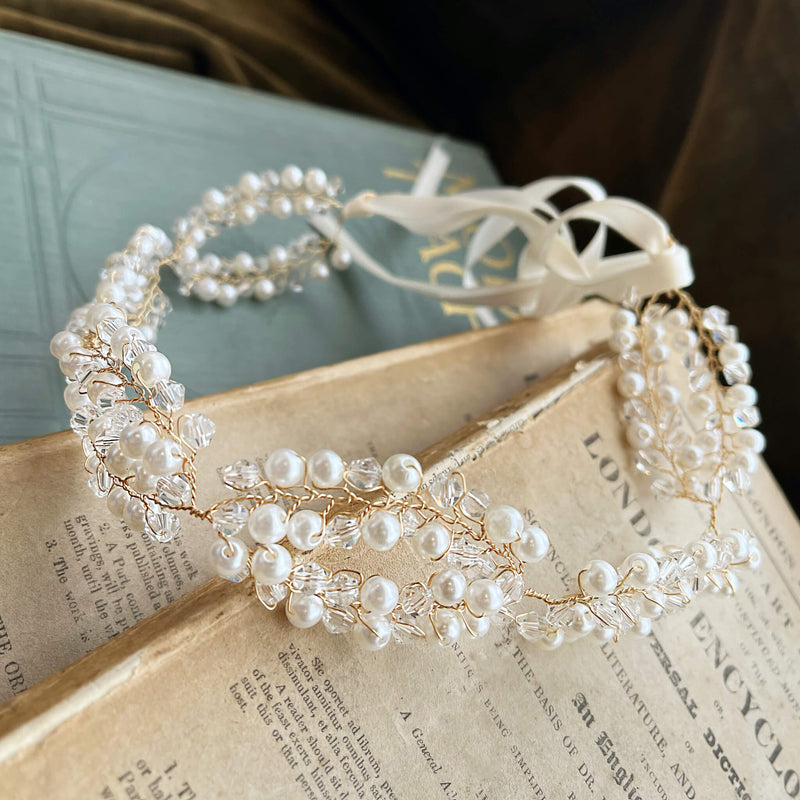 |
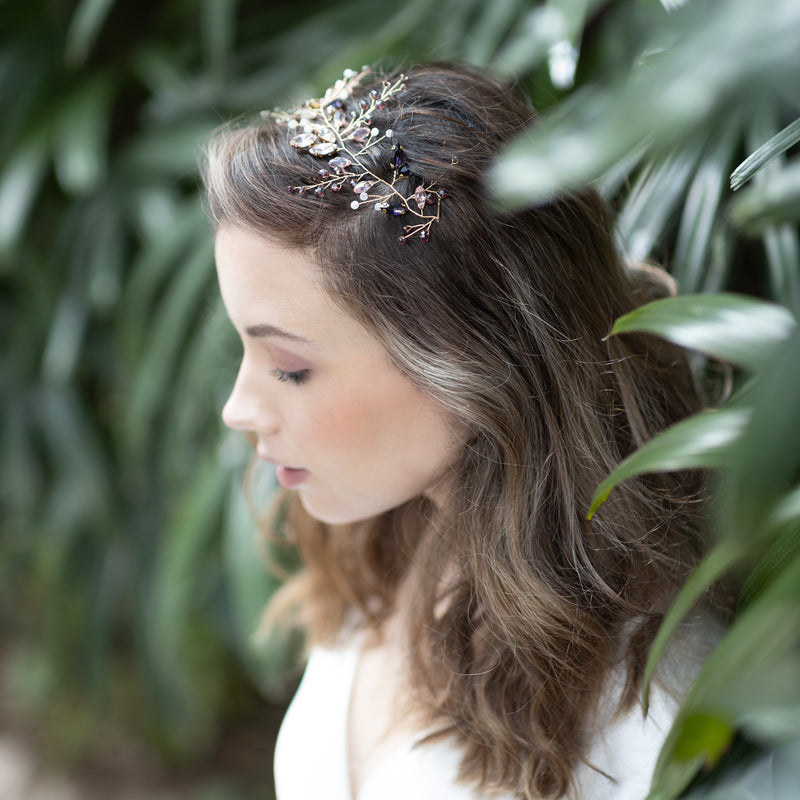 |
|
Shaylee Enamel Floral Golden Leaf Hair Comb |
Asteria Goldtone Pearl & Crystal Hair Vine |
Maeve Mulberry Crystal Hair Vine in Gold |
| Shop Now | Shop Now | Shop Now |
Jewellery That Tells Your Story
As you plan to weave these Celtic traditions into your wedding, consider complementing them with a touch of modern sophistication by exploring the stunning jewellery pieces at Jules Bridal. Check out our Irish Legend Series of exquisite Celtic-inspired bridal jewellery, such as the Asteria gold and pearl hair vine or the Misty green Hair Pins, to symbolize your own unbreakable bond.
Leave a comment
Comments will be approved before showing up.
